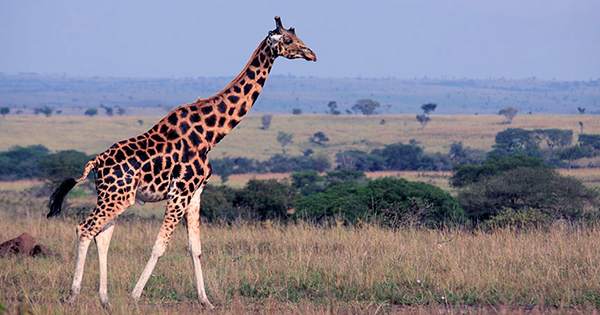New research that offers crucial insights into the harm that the legal wildlife trade now presents to international conservation and sustainability efforts has been published by an international and interdisciplinary team of scientists.
Members of numerous expert groups affiliated with the International Union for Conservation of Nature (IUCN) Species Survival Commission make up the group, which aims to draw attention to the dangers associated with the legal but unsustainable trade in thousands of species.
The study, which was just released in this month’s Journal of Environmental Management, involved a thorough examination of the safeguards, laws, and other systems in place to assure the ethical use of live wild animals and their body parts.
The majority of the time, the legal trade in wild animal species is not supported by any solid sustainability evidence, according to the researchers. In particular, they found a dearth of information on the volume of wildlife exports, wild animal population data, and evidence-based impact assessments of trade.
“Exploitation of wildlife represents one of the greatest threats to species survival. However, too often legal trade is automatically equated as being sustainable despite a lack of evidence needed to confirm that this is indeed the case,” says Dr. Alice Hughes, Lead scientist, and Associate Professor at the University of Hong Kong.
“Our research sheds stark light on the systemic lack of regulatory safeguards that are urgently required to ensure that the legal trade does not drive wild population declines. While many wildlife focused conventions include claims of ‘sustainable use’ in reality these rarely refer to evidence or use precautionary principles to prevent further overexploitation of species.”
Creating awareness among decision makers of the lack of sustainability in much legal wildlife trade is urgently needed. Action is required to adapt relevant regulatory frameworks, like CITES, to ensure the continued survival of many threatened species. There are no winners from unsustainable wildlife collection and trade: without sustainable management not only will species or populations become extinct, but communities dependent upon these species will lose livelihoods.
Professor David Edwards
While the fight against the illegal wildlife trade is receiving a lot of attention, the legitimate wildlife trade also faces many of the same difficulties. According to some estimates, the annual value of the legal trade in wildlife is currently approximately $400 billion USD.
In order to lessen the loss of biodiversity worldwide, many United Nations treaties have acknowledged and built upon the consequences of unsustainable legal trade. Wildlife exploitation, however, is still seen as the second biggest threat to the world’s variety and its essential benefits to people, immediately after climate change.
Dr. Mark Auliya of the Leibniz Institute for the Analysis of Biodiversity Change in Bonn, Germany and contributing scientist, says, “Our study provides evidence for 183 species showing unsustainable trade in a broad array of wildlife groups ranging from mammals like the mountain reedbuck for trophy hunting and handicraft products to invertebrates like the harlequin shrimp for the global exotic pet trade.”
“We found that the current legal trade was not supported by rigorous evidence of sustainability of these species examples with a lack of data on export levels and wild population monitoring data preventing any true assessments of sustainable use. These examples are only an indicative subset and should be considered as the tip of a larger iceberg. We expect that further scrutiny will reveal that far many more wildlife species are being exploited at unsustainable levels.”
In order to prevent population declines and species extinctions as well as to make long-term economically viable wildlife trade possible, the authors warn against making the assumption that wildlife species can withstand high offtakes in the absence of data. They also stress the importance of applying the precautionary principle appropriately.
These species are crucial for ecosystem health. For the aforementioned reasons, population monitoring is crucial to enabling sustainable trade and preventing the provision of crucial ecosystem services from being jeopardized.
Dr. Vincent Nijman contributing scientist, and professor in anthropology at Oxford Brookes University in the UK says, “Understanding what wild animals are being traded, where from, and at what volumes, in addition to the impact on the long-term viability of species, will be critical to slowing the loss of species from across the planet. In particular, a more precautionary approach is needed to halt biodiversity declines, underpinned by a revised burden of proof.”
“This should place the need on traders and importers to illustrate sustainability to allow trading, not conservation scientists and practitioners to reveal unsustainability, or customs officers to prove export contravenes regulations.”
To help address the current situation, the scientists identify four core areas that should be strengthened to achieve this goal: (1) rigorous data collection and analyses of populations; (2) linking trade quotas to IUCN and international accords; (3) improved databases and compliance of trade; and (4) enhanced understanding of trade bans, market forces, and species substitutions.
Professor David Edwards contributing scientist, and Professor of Conservation Science at the University of Sheffield, UK says, “Creating awareness among decision makers of the lack of sustainability in much legal wildlife trade is urgently needed. Action is required to adapt relevant regulatory frameworks, like CITES, to ensure the continued survival of many threatened species.”
“There are no winners from unsustainable wildlife collection and trade: without sustainable management not only will species or populations become extinct, but communities dependent upon these species will lose livelihoods.”
















